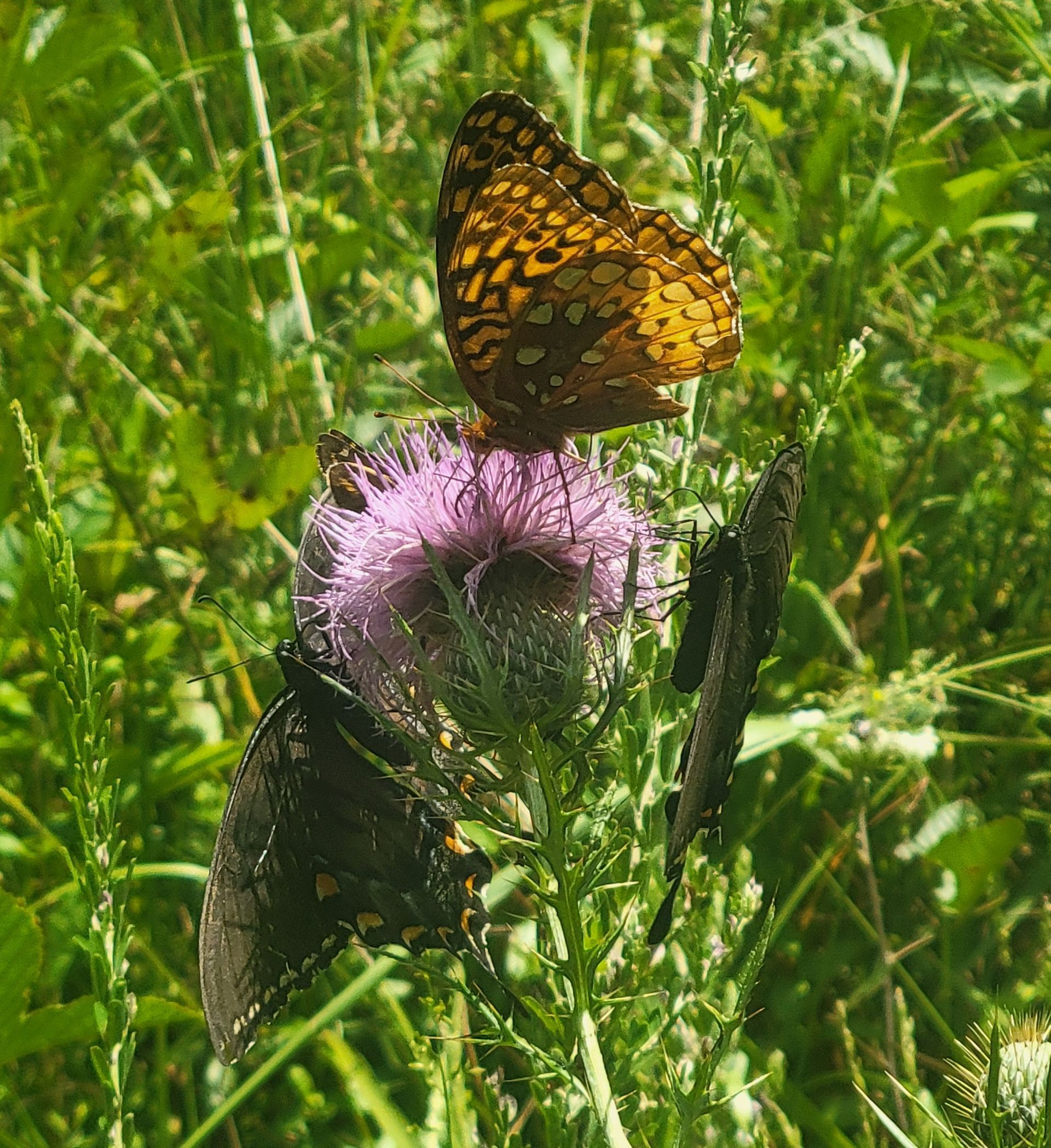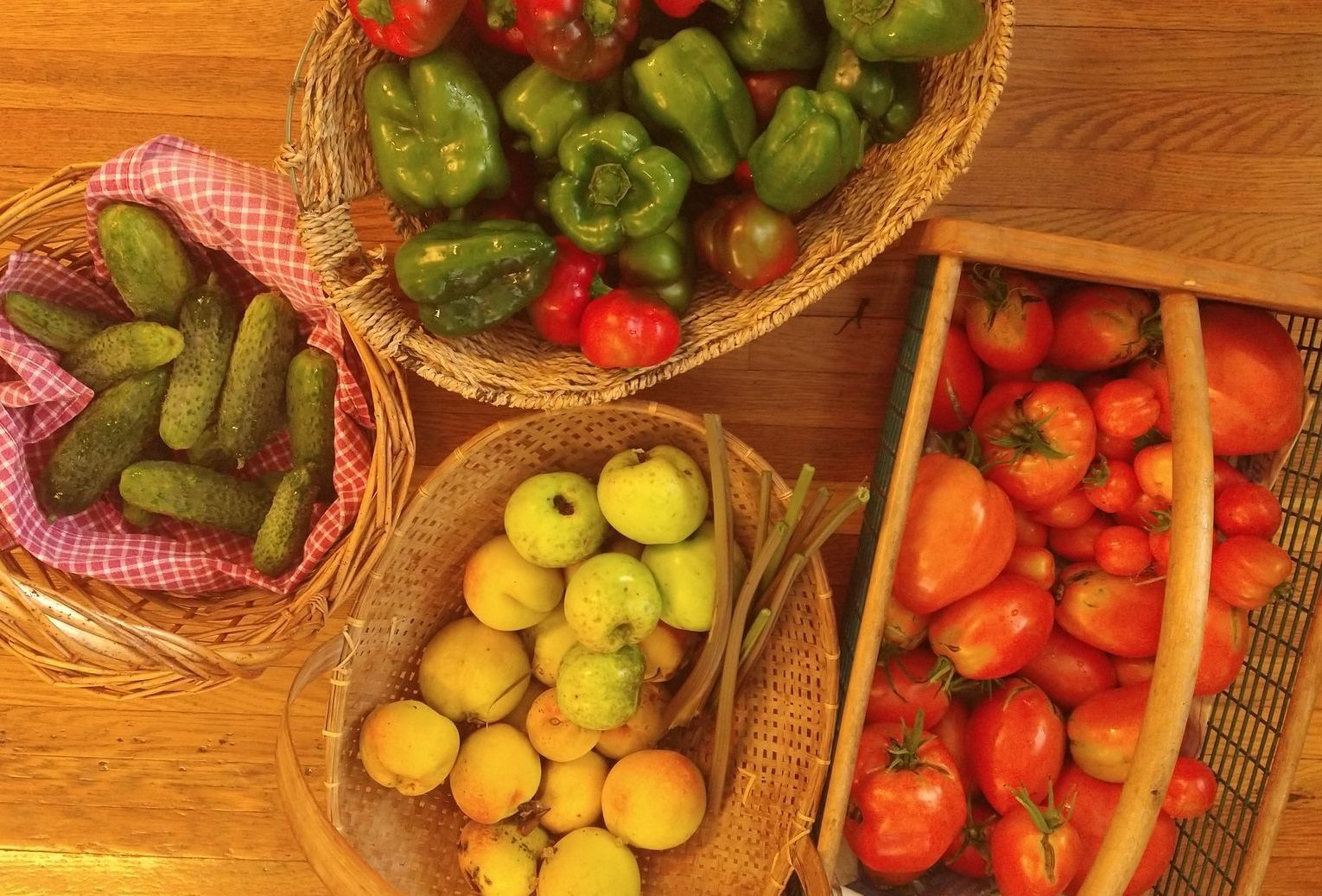Getting Your Fruit Trees Off to a Good Start
Getting a new fruit tree in the mail or from a local nursery is like welcoming a new family member. It makes me smile to know this “baby” tree will be a part of our homestead for years to come. However, a new tree requires immediate attention during an already busy season if it’s going to both survive and thrive. After decades of a few failures and some slow starts, I believe I can give you a recipe for getting your new fruit trees off to a great start.
When Your Fruit Tree Arrives:
Whether you’ve purchased your trees through a local nursery or through the mail, I’m hoping you were able to find bare-root or recently-potted trees. Not having your new trees root-bound by being too long in a container will be important to giving them a healthy start..
Trees arriving in the mail have the habit of showing up at inopportune times. If you can’t get them planted in a day or two, it’s best to leave them in their box, in a cool place. When you are ready to plant your bare-root trees, soak their roots in water at least one hour to overnight. A drywall bucket works well because it can then be carried out to the tree’s new home, water and all.
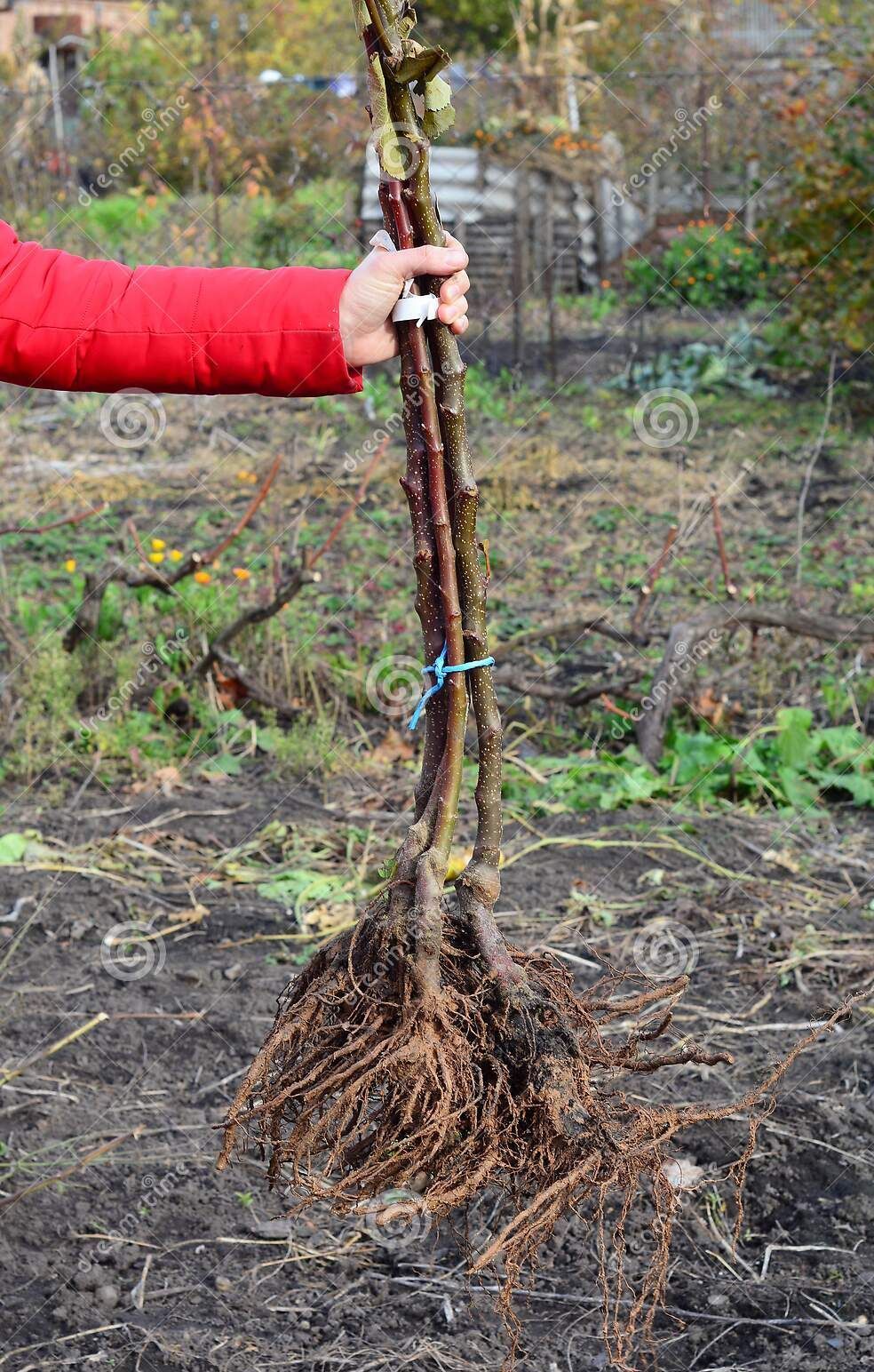
Giving Your New Trees a Home:
Dig the perfect hole: Begin by digging a custom-designed hole for each fruit tree. That means looking at the diameter and shape of its roots and digging the hole to fit the roots rather than pruning the roots to fit the previously-dug hole. Is there a long tap root heading off one direction? Then dig an asymmetrical hole to accommodate that root. It truly helps a young tree to keep all its remaining roots.
The depth of each hole is determined by the tree’s graft line. This line is recognized by a change in the bark color or by a diagonal scar in the bark. This graft line must remain just above soil level. The part
above the graft line is the scion; it determines the variety of fruit. The part
below the graft-line is the fruit tree’s root-stalk; it helps the ultimate size of each tree. The root-stalk is the only part of the tree that should be in contact with the soil and allowed to form roots.
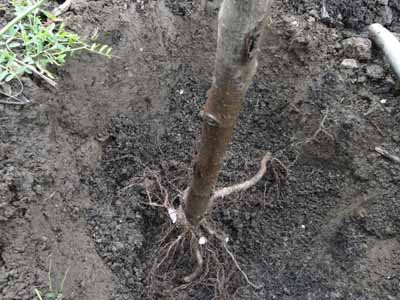
Because our homestead has clay soil, we originally lost new fruit trees when their roots sat in water. We thought filling the holes with topsoil would help the roots grow, but light topsoil in a clay-basin resulted in water being held around the roots. Our solution has been to mix topsoil together with the deeper clay soil before returning the soil to around the tree's roots. The cardboard box that a tree arrives in makes a good working surface on which to mix these soils. Another help in getting water to drain away from the roots has been to score the clay sides of a hole with the edge of a shovel before the tree is planted.
Getting trees into their new holes is easier when two people work together. One person holds the tree centered and upright with the graft line a couple inches above the soil-line. The other can then concentrate on gently filling the soil back in around the roots. Stepping on the ground around the fruit tree’s trunk is necessary to remove air pockets, but don’t let the graft line sink below the soil line when doing this.
Immediate care: Don’t walk away yet! Your newly-planted tree still needs gentle pruning, staking and watering. A newly planted fruit tree should be pruned to about three feet in height this will help balance the above-ground scion to the loss of tiny rootlets that occurred when your tree was dug for transport. If your little tree has branches, you can begin training them to angles of ten and two-o'clock with wooden, spring-type clothespins.
Staking is done through a fruit tree’s first year until it gains stability by expanding its roots. Dwarf trees are the exception because they need to be staked long-term. Use a firm rope attached to a sturdy stake which is braced at a slight angle away from the tree. The stake is placed on the windward side—the direction from which the wind usually comes. Protect the tree trunk from rope damage by running the rope through a short piece of hose where it will touch the tree’s bark.
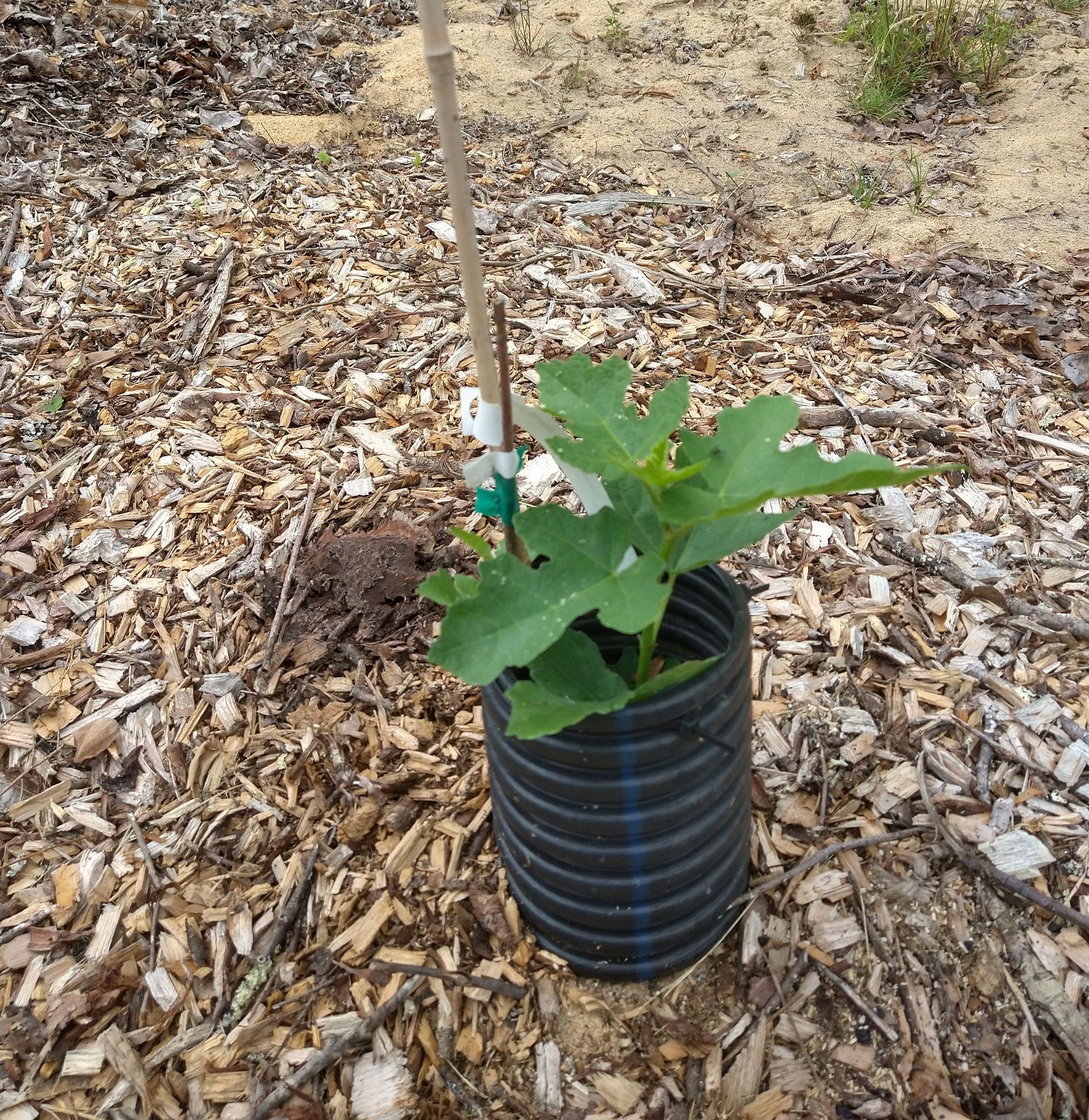
Keep watering:
Make sure your tree gets about one inch of water each week for its first year. Dwarf trees will need this attention long-term.
Care of the young tree's vulnerable trunk:
Protect the trunk of your fruit trees as soon as you plant them. Rabbits, voles, and mice use the young fruit trees’ bark as food. Even a small bite to the bark provides an entry-point for pathogens, and if bark is removed around the circumference of a tree, it will die. Sun can also damage tree trunks in the winter when heating and cooling cracks the dark bark. These cracks, called “sun-scald” provide an entry point for pathogens.
Tree guards: There are various solutions to protecting a young tree’s trunk. Surrounding the trunk with six-inch drainage tile prevents damage from small animals. Alternately, vinyl spiral tree guards come in two-foot lengths and can be left in place for years because the expand with the tree’s growth. Because the vinyl is white, it also prevents sun-scald by reflecting the sun.
Paint: Another method of preventing sun-scald is to simply paint the trunks of your fruit trees with white latex paint. Half-strength with water or full-strength paint prevents sun-scald, but some people find that full-strength latex paint is also effective for discouraging damage from mammals like mice. I gave our fruit tree trunks the full-strength paint job a few years ago, and they continue to do well.
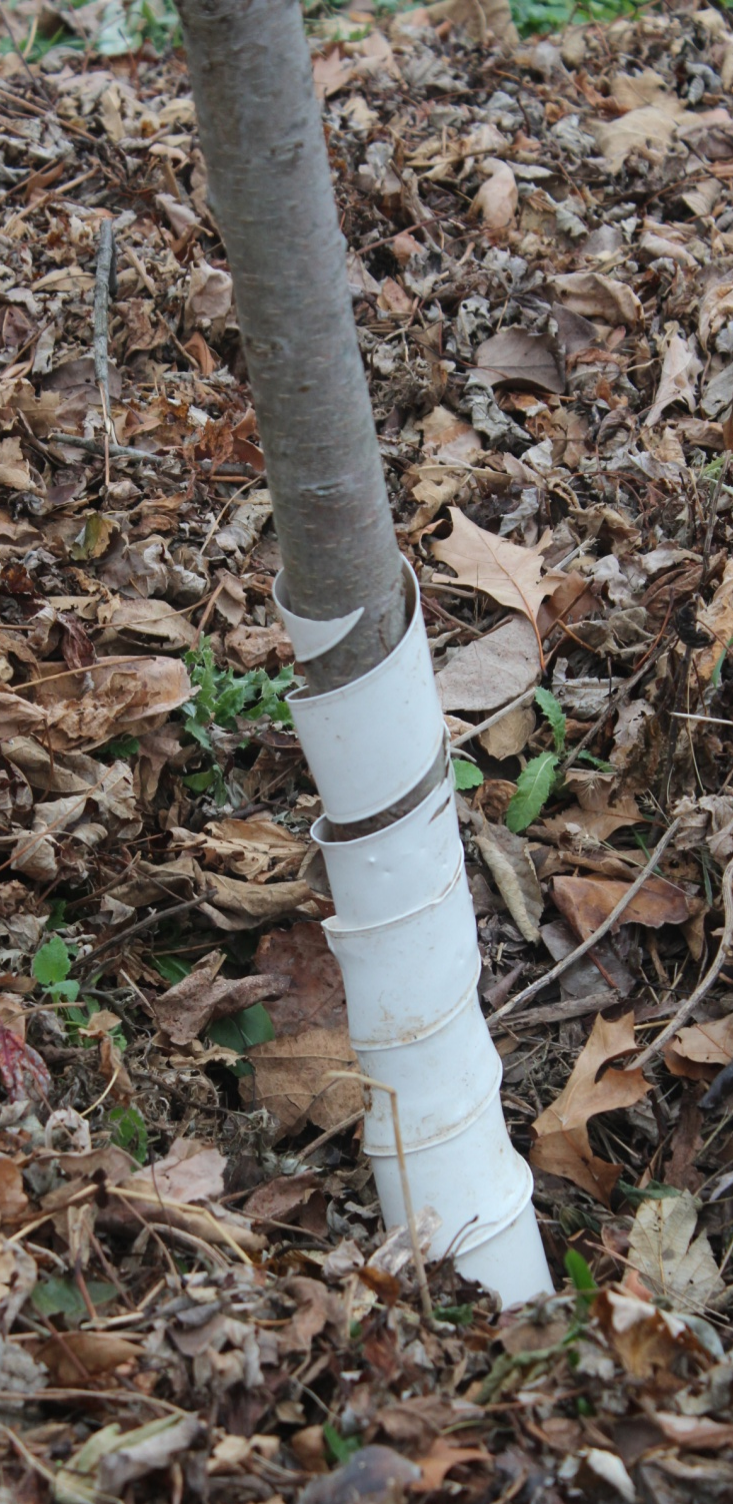
Mulch is important:
Begin to mulch as soon as your tree is planted. Mulching the ground around fruit trees is essential both to protect the trees’ roots and to allow the roots to reach deeply into the soil. Mulch that is composed of brown substances like leaves, wood-chips, and straw will gradually acidify the soil and create a high-fungal environment that allows fruit trees to thrive. Make the mulch thick enough to kill the grass all the way out to the “drip line,” or as far as the tree’s branches reach. This mulch will keep disappearing as it composts into beautiful soil. At the same time, the tree’s branches will continue to reach out farther as the tree matures. In this way, we’re guaranteed job-security because our fruit trees will always need more mulch!
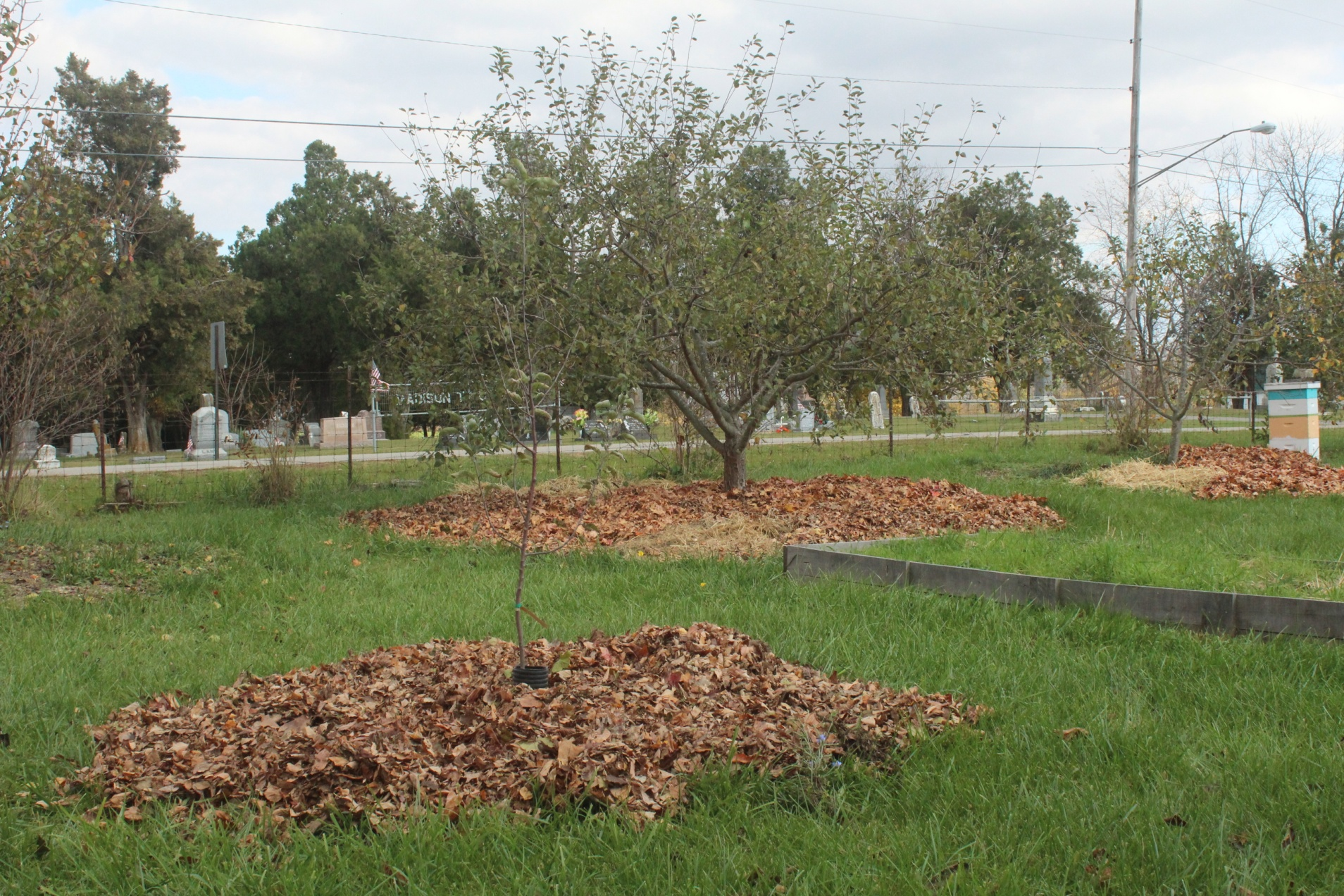
The original care you take with new fruit trees will translate into protecting your investment by having healthy trees and fruit for decades to come. It pays to dig their holes well, begin their pruning early, and protect their young trunks and roots.
Look
here
for how to have wonderful fruit without chemicals. For pruning basics, look
here.

